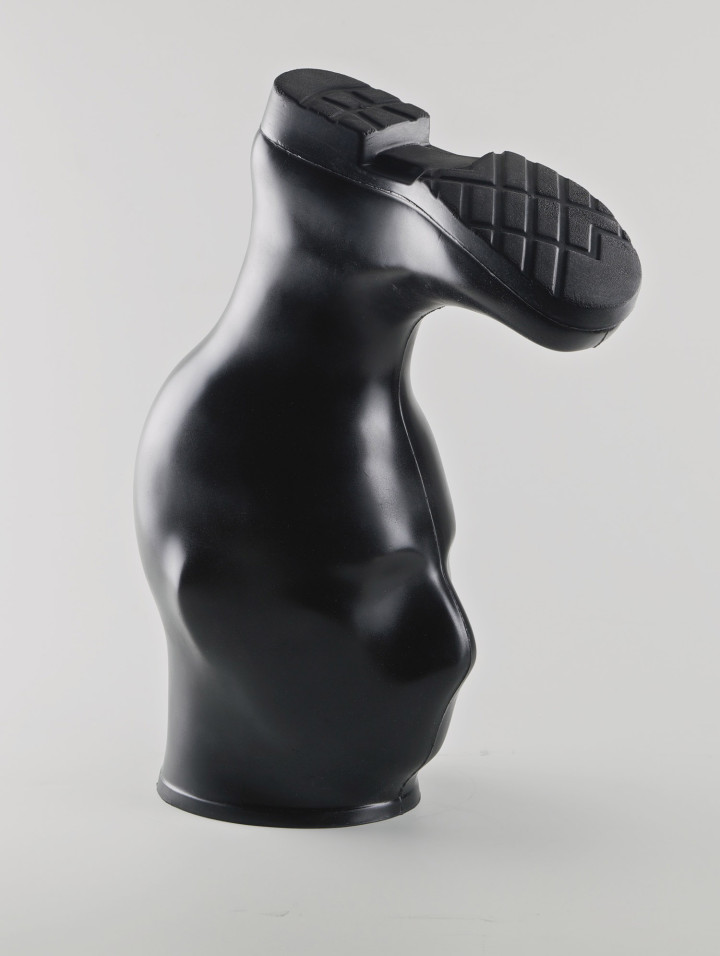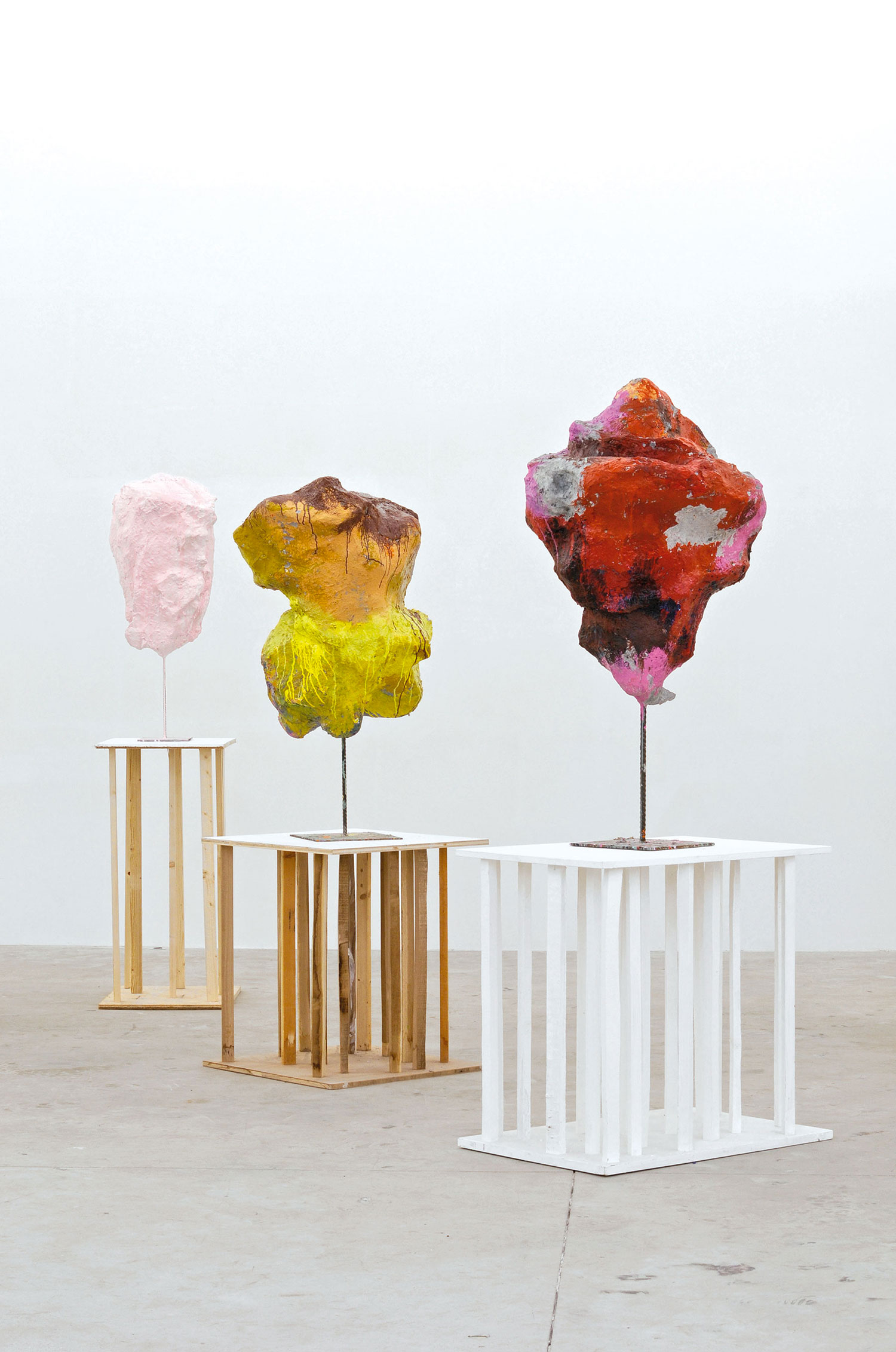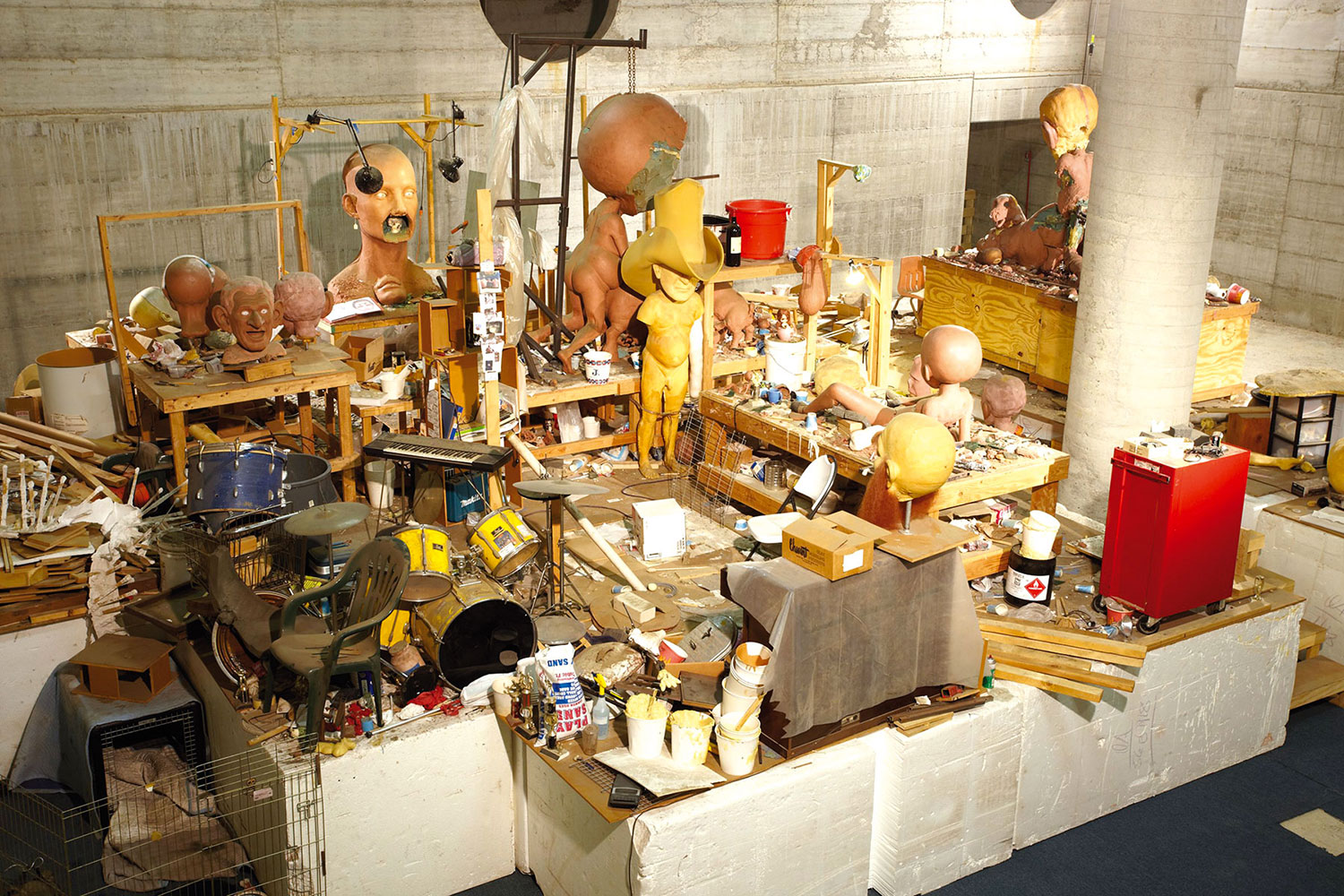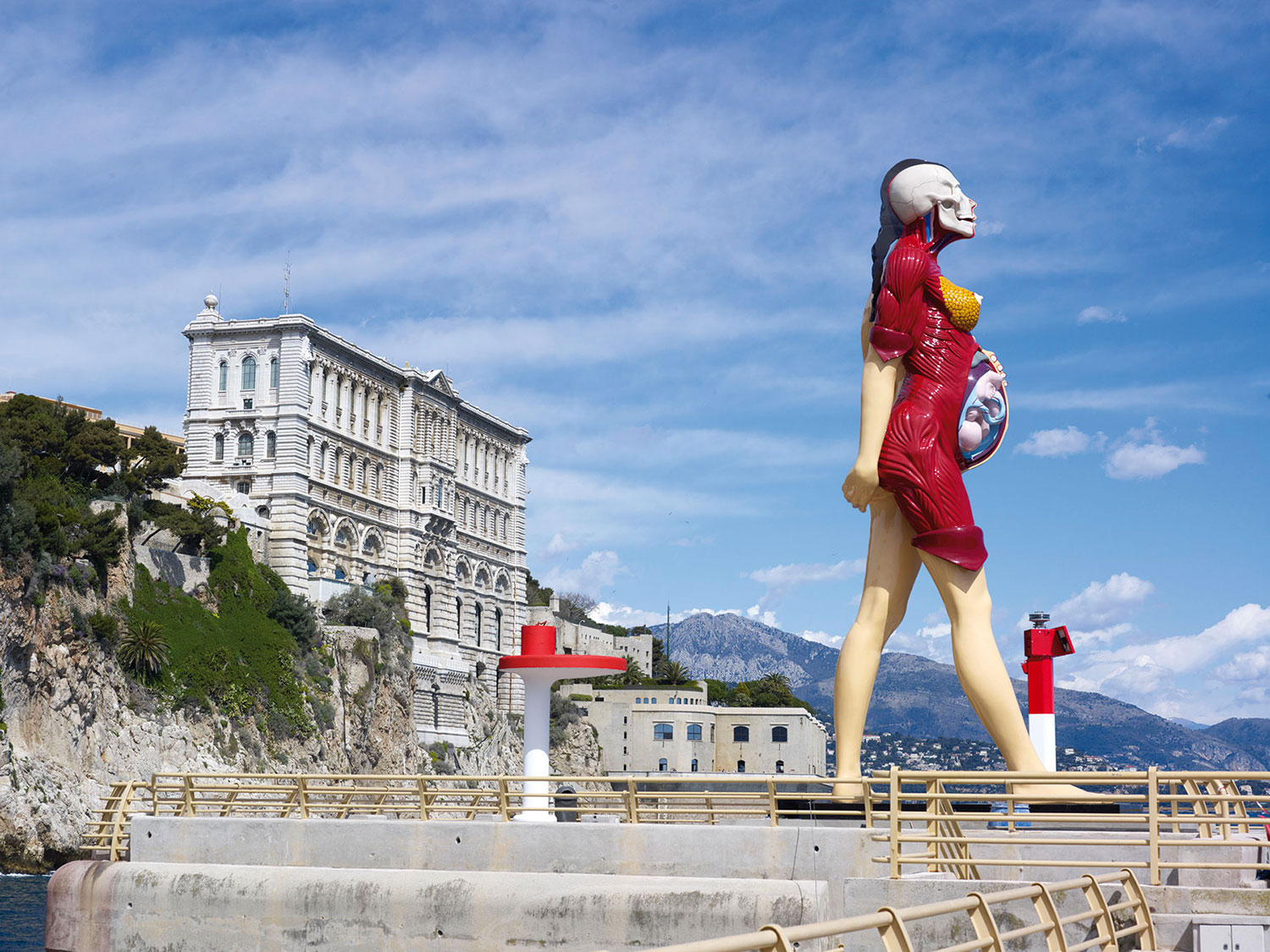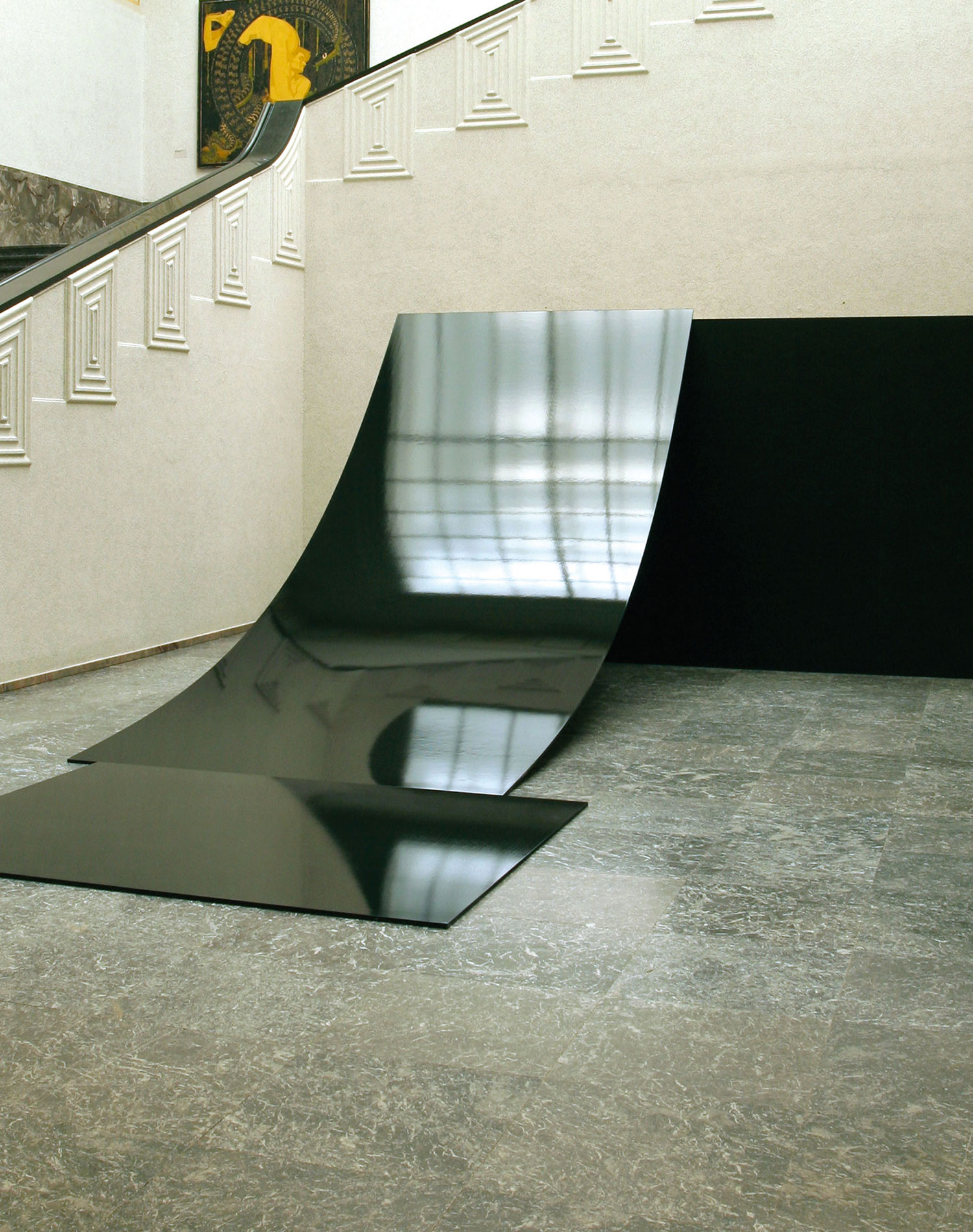
Legs dangling over the top of the Menil Collection’s Renzo Piano façade, backlit by the sky, Maurizio Cattelan’s mechanical drummer boy [Untitled, 2003] mostly sits silent. Many visitors fail to notice his presence until he begins beating out an irregular rhythm on his drum, a performance he repeats hourly throughout the day. While evoking the character Oskar in Günter Grass’s novel The Tin Drum (1959), this little man’s drumming does not convey Oskar’s fierce urgency. Rather, his distant thrumming resonates faintly within the museum’s galleries.
This calculated remove perfectly encapsulates Cattelan’s strategy for “Is There Life Before Death?”, the latest in a series of artistic collaborations the Menil has staged over the past decade. At their best, as in Robert Gober’s “The Meat Wagon” (2005), they have clarified both the artist’s creative intentions and the intertwined nature of the Menil’s collections.
Working with curator Franklin Sirmans, Cattelan has opted for an episodic approach, sequencing eleven sculptures to suggest both a military campaign and a game of artistic ‘hide-and-seek’ with the museum’s laterally sequenced galleries. He has arranged a fairly conventional grouping of postwar American art (Andy Warhol, Bruce Nauman, Robert Morris, Jasper Johns, Robert Rauschenberg, Ed Ruscha, James Lee Byars) spiced with Arte Povera exemplars (Alighiero e Boetti, Lucio Fontana, Michelangelo Pistoletto, Giuseppe Penone). Accorded a room of its own, Cattelan’s grandly scaled All (2007) substitutes solemnity for the biting satire that propels much of this artist’s content. This sculptural ensemble of nine prone figures encapsulates issues of religion, human tragedy and mass-media ubiquity within a refined veneer of Carrara marble.
Cattelan has stated that “Anyone growing up in Italy has a twisted relationship with religion,” and his famously agitated relationship with Catholicism — that the Menils with their own, highly individualized approach made an essential component of their collection — is a major theme of “Is There Life Before Death?”. In galleries displaying Surrealist art, he quite literally punctures All’s solemnity by placing a wooden placard bearing the crucifixion inscription “INRI” in the ribs of a taxidermied horse. Flanking a grouping of fine Roman funereal portraits, Cattelan places a female crucifixion, viewed from the rear and shackled and pinned inside an open shipping crate, like an art object readied for transport, standing opposite a gauzy study in tawny-hued taxidermy: two golden retrievers positioned as if standing guard over a hatchling chick. Contradicting devotional attitudes in another gallery is Ave Maria (2007), a trinity of male arms extended from one wall in a fascistic salute.
Stylistic shape-shifting allows Cattelan to assimilate his work into the museum’s matrix so that it either resides chameleon-like or grabs you by the lapels to shout slogans. In either case, his intent is to upset expectations for aesthetic progress outlined by most museum presentations. This approach frees him from the aesthetic hermeticism of fellow artist fabricators, like Gober or Charles Ray, whose works fetishize figurative distortions and displacements, employing sexuality in lieu of (or as a conduit to) social commentary. Insistently self-referential as well as political, Cattelan’s figuration is also frequently very funny, effusive in an old-fashioned, vaudevillian way that contrasts strongly with the solemnity of much of the Menil’s collection. Indeed, with “Is There Life Before Death?” Cattelan goes out of his way to prove that, as far as museums go, he is the exception that proves the rule.

